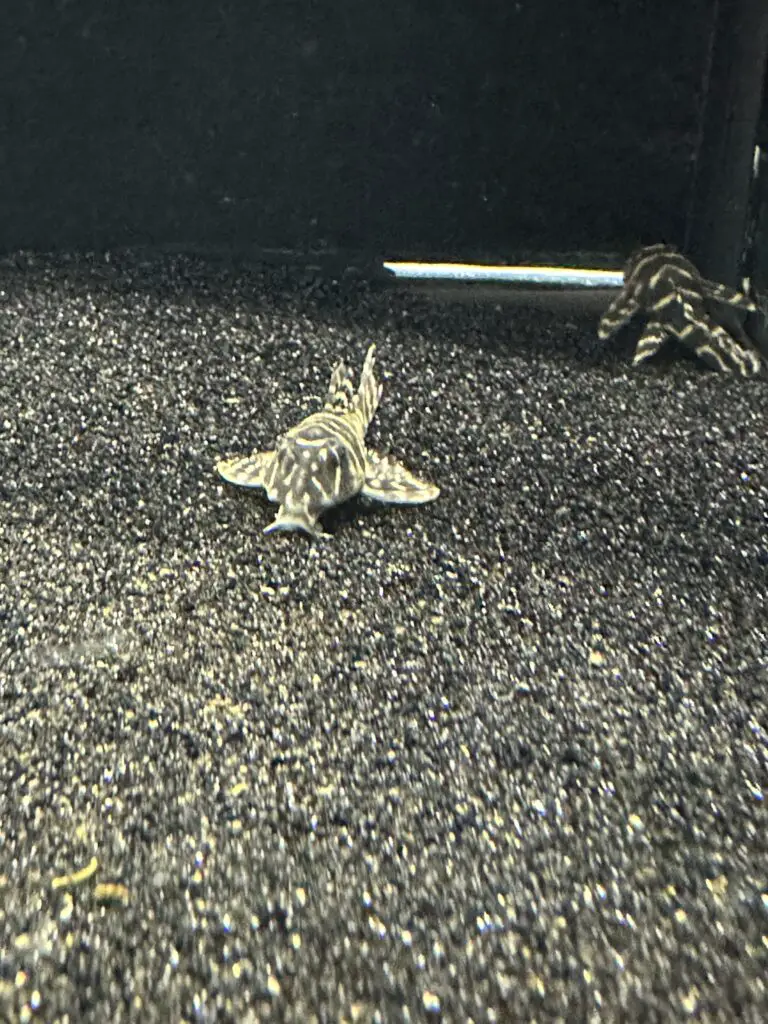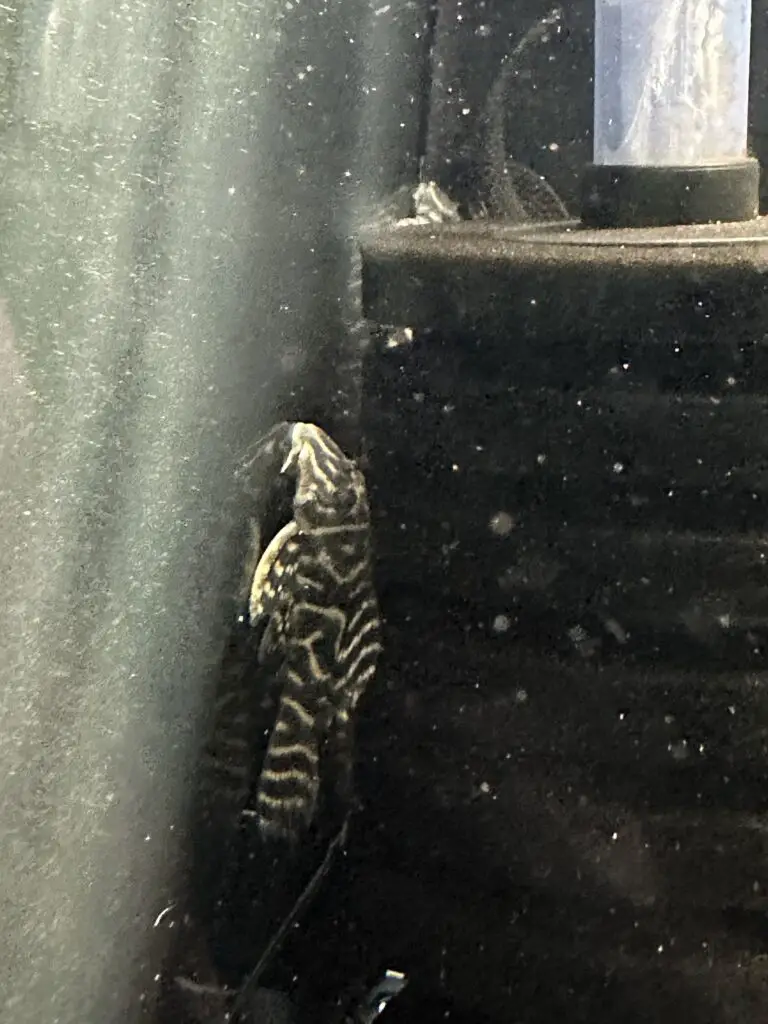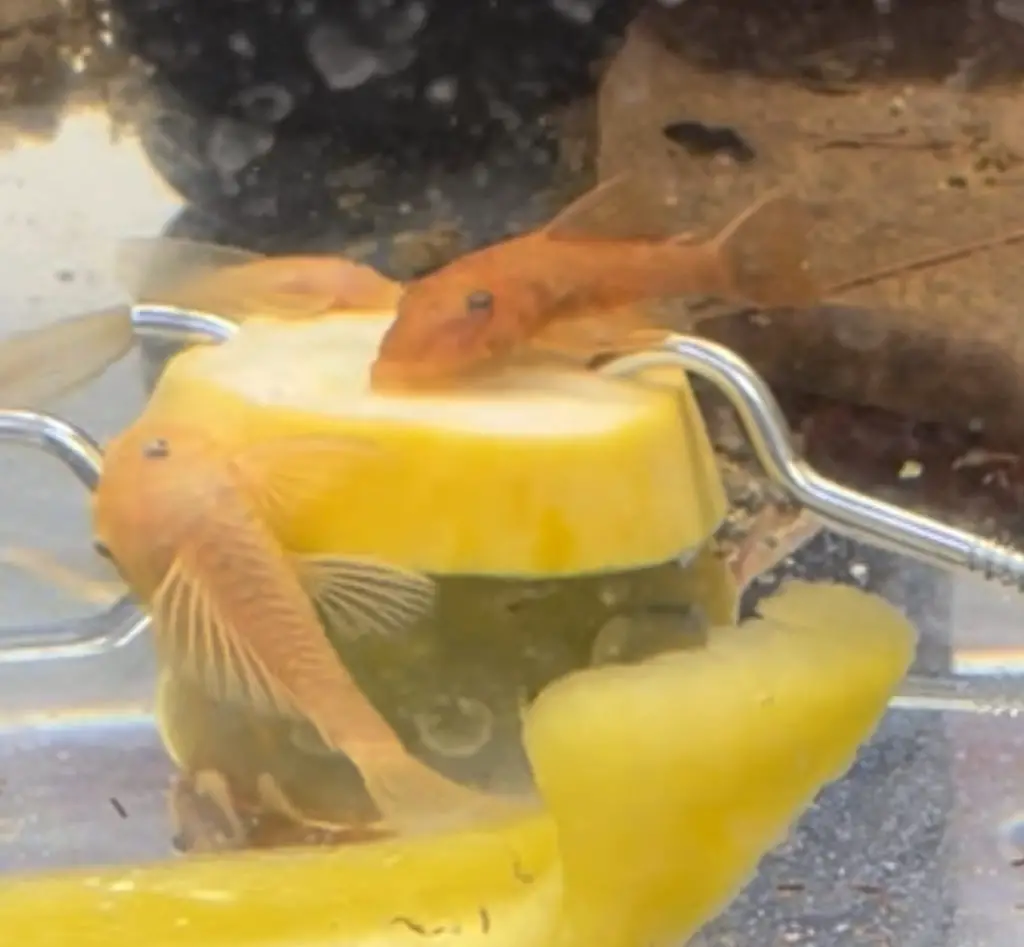The L129 Pleco also known as Colombian pleco is a pretty fish that won’t break your pocketbook.
It’s also one of the few plecos that have received a scientific name. There are so many plecos and so few scientists that many plecos have received L numbers and nothing else.
The L129 was given the scientific name Hypancistrus debilittera in 2007 by Armbruster, Lujan & Taphorn
The L129 is native to Venezuela which is quite funny since the common name for this pleco is the Colombian zebra.
The Colombian pleco is a fairly easy pleco to keep. Which makes it a perfect addition to any tank big or small.
L129 plecos are fairly adaptable and can be kept in a variety of living conditions and tank mates.
They obviously have preferred living conditions. Meeting those requirements will help your fish be the healthiest and have the longest life possible.
Obviously clean water is important for all fish but the Colombian Pleco isn’t ultra sensitive to water cleanliness.

If you have good filtration and regular water changes it will be a happy fish.
Another important aspect of your water is the ph or hardness of your water. You want to try and match this. While the l129 Pleco can live in a fairly wide range of ph the best for it is 6.4-7.6.
If your water is close I wouldn’t worry too much since stable water parameters are more important than perfect ones.
While many products can help you achieve the water parameters you want, I prefer a more natural approach.
This tends to lead to fewer ph crashes. That and I’m not super exact at measuring out the products perfectly.
If my water is too soft I like to add rocks or crushed coral substrate to buffer it to make it harder and if my water is too hard I like to add wood or Indian almond leaves.
As for feeding your Colombian zebra Pleco they are omnivores so most foods will work great. Even though they are omnivores they can and will eat both plants and meat but they tend to enjoy eating meaty foods more.
I have several protein based foods I rotate through based on availability. Right now I am feeding bug bites but any Protein pellet will do.
All I suggest is looking at the ingredients and making sure the first few ingredients are actual identifiable protein sources like shrimp or insects, not fish meal.
Which is just all the junky leftover parts of fish.
I also feed some form of algae wafer and the occasional fresh veggie for a treat.
Like most plecos, the temperature they prefer is between 75-82 degrees Fahrenheit. This makes them perfect for most fish tanks.
Most fish you will find in a pet store are tropical and need warmer temperatures.
Due to the peacefulness of the L129 pleco, they make great companions to most fish. The majority of community fish like rasboras, neon tetras, or any tetra work great.
Other fish like Mollys, guppies, or bettas will be fine companions as well. If you decide to go with larger fish like cichlids just make sure there are plenty of hiding places for your plecos.

I wouldn’t suggest an l129 for monster predatory fish though. Anything that can fit in a fish’s mouth is considered food.
Due to its small size of only 3 inches, it can go in almost any tank size. I would say that healthiest to be in a 10 gallon tank or bigger. This will allow it to have enough living space and claim a space as its territory.
Even though the L129 Pleco will claim a portion of the tank as its territory it is a very peaceful fish and will only guard this area against other plecos.
Plecos are mainly a nocturnal fish and as such will hide much of the day. This will make it extremely important that it has somewhere it can hide.
Whether that’s a decoration that has a hideaway in it or you have a cave special for them.
I like to use terracotta watering spikes. I have a lot of plecos in my tanks and they are a cheap option that all of my plecos love.
It has a brown or black body with thin lines that are maze like all over its body. The color variations can be large.
They can have a nice chocolate brown to a dark grayish black. The maze like lines can be yellow to a white in color.
The L129 Colombian pleco isn’t a hard fish to breed. I would say just slightly more difficult than breeding bristlenose plecos.
The main and most important part of breeding Colombian plecos is to have a male and a female. The male and female l129 have a few subtle differences.
The body shape of the male l129 pleco is a more slender body shape and the female has a more round plump shape. This is mostly due to the eggs that grow in the female’s body.
Then the males will be hairier than the females. Kinda like how human males have facial hair. The males will have longer whiskers than females that grow out of the gill area.
Males will also have hairy front fins. There will be stiff hairs that sprout out of the end ½-⅓ of the fin.
To make sure you have a male and a female I like to purchase 4-6 fish. This usually gives you enough fish so that you minimally have one male and one female.
Next, you will need to make sure every l129 Colombian pleco has a cave. It is vital when breeding plecos that each fish has a place to call home.
This is also where the male will guard the eggs and raise the babies. He will usually guard the eggs and babies for roughly 2-3 weeks.
When the female is ready she will search out for the male and the male will try to attract her by doing a little shimmy with his tail sticking out of the cave.
She will then enter the cave where he will trap her in there tell she lays the eggs. This can take anywhere from a few hours to a few days.
After this most pleco dads are great fathers and will do most of the work for you.
Whether you are looking for a new beautiful addition to your community tank or looking to breed them the l129 Colombian pleco is a great fish to keep and care for.


